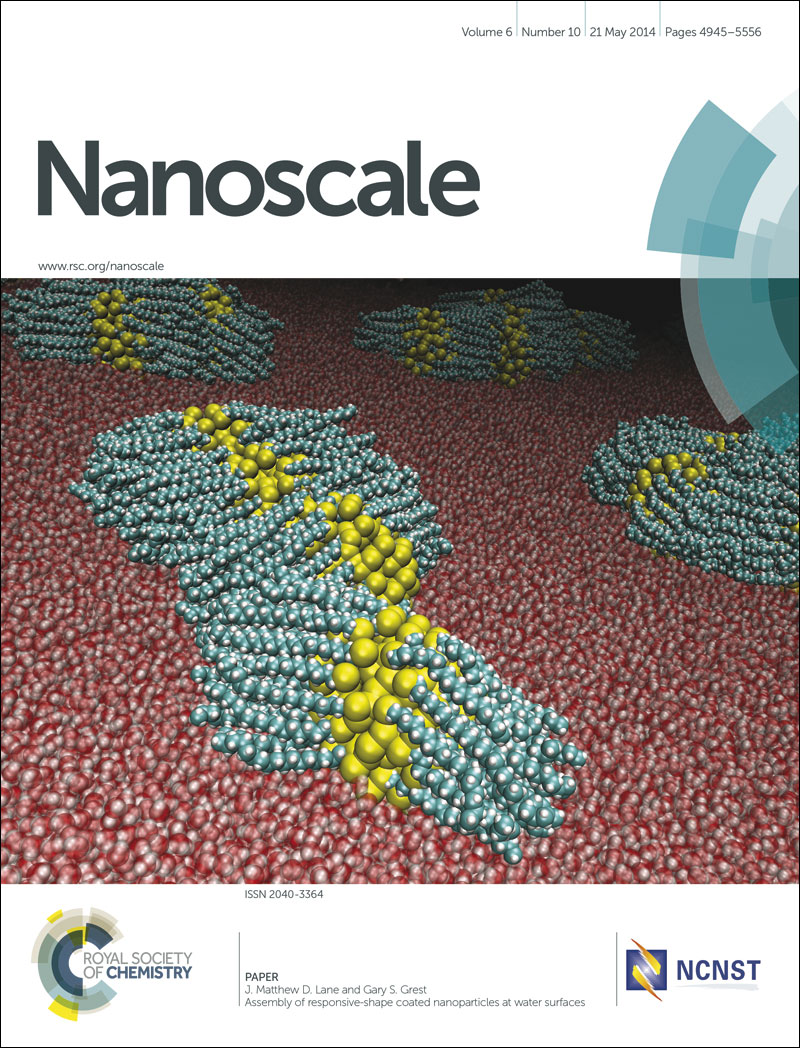Probing the effect of surface chemistry on the electrical properties of ultrathin gold nanowire sensors†
Abstract
Ultrathin metal nanowires are ultimately analytical tools that can be used to survey the interfacial properties of the functional groups of organic molecules immobilized on nanoelectrodes. The high ratio of surface to bulk atoms makes such ultrathin nanowires extremely electrically sensitive to adsorbates and their charge and/or polarity, although little is known about the nature of surface chemistry interactions on metallic ultrathin nanowires. Here we report the first studies about the effect of functional groups of short-chain alkanethiol molecules on the electrical resistance of ultrathin gold nanowires. We fabricated ultrathin nanowire electrical sensors based on chemiresistors using conventional microfabrication techniques, so that the contact areas were passivated to leave only the surface of the nanowires exposed to the environment. By immobilizing alkanethiol molecules with head groups such as –CH3, –NH2 and –COOH on gold nanowires, we examined how the charge proximity due to protonation/deprotonation of the functional groups affects the resistance of the sensors. Electrical measurements in air and in water only indicate that beyond the gold–sulfur moiety interactions, the interfacial charge due to the acid–base chemistry of the functional groups of the molecules has a significant impact on the electrical resistance of the wires. Our data demonstrate that the degree of dissociation of the corresponding functional groups plays a major role in enhancing the surface-sensitive resistivity of the nanowires. These results stress the importance of recognizing the effect of protonation/deprotonation of the surface chemistry on the resulting electrical sensitivity of ultrathin metal nanowires and the applicability of such sensors for studying interfacial properties using electrodes of comparable size to the electrochemical double layer.


 Please wait while we load your content...
Please wait while we load your content...